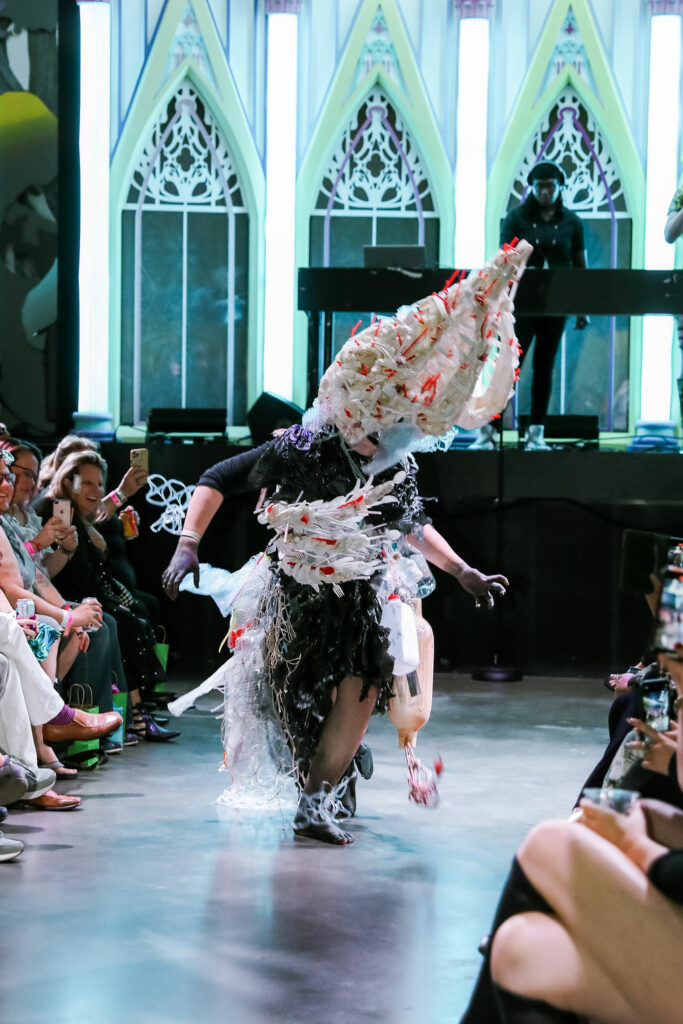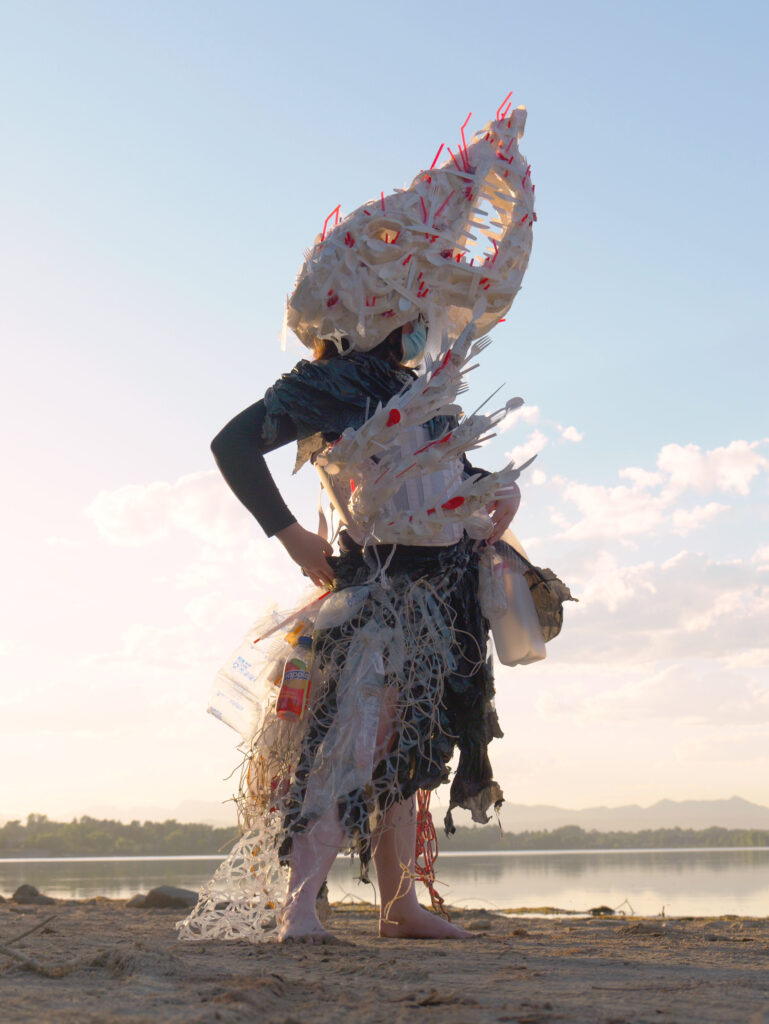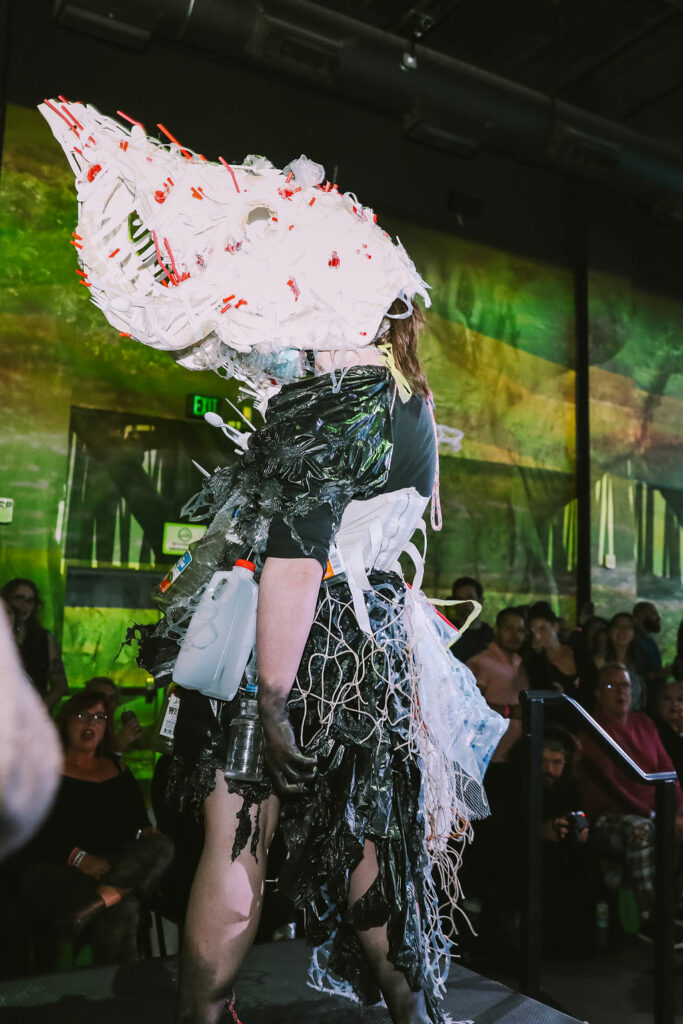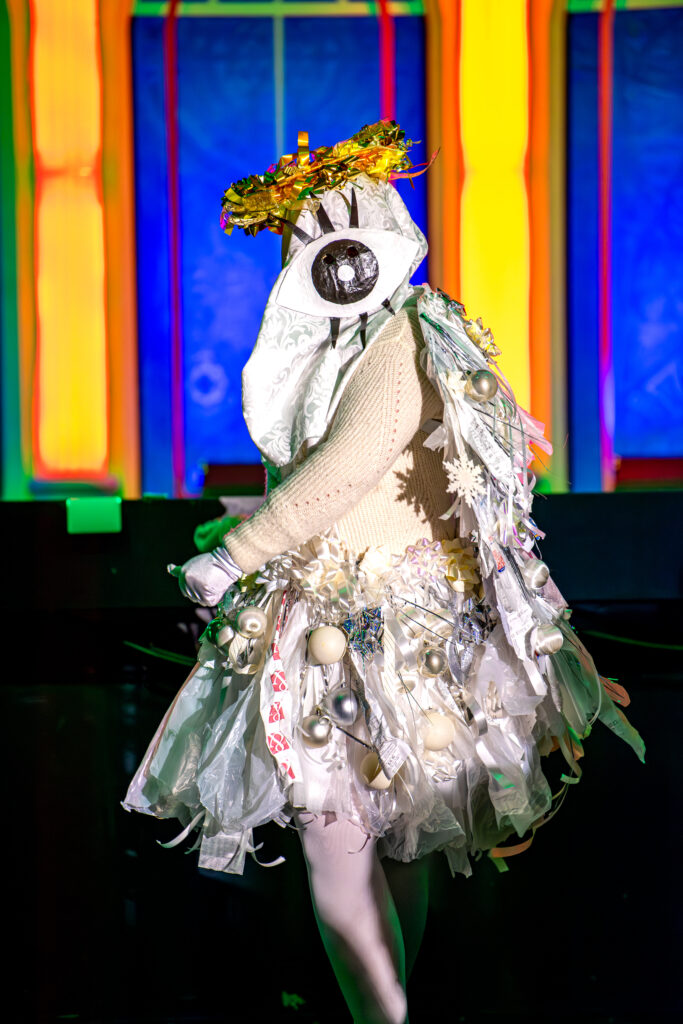
Be Not Afraid
Out walks a giant gift box with legs, adorned with a cartoonish bow. It pauses for a moment, and then the facade drops – and from the gift box emerges an all-white angelic form, clad in receipts and ribbons. “Be Not Afraid” explores the conflicts of the Christmas season, between capitalistic consumption and religious tradition. Beneath the secular gift wrap and bows hide another side of the holiday, one sometimes in direct conflict with the side which tries to sell as much as possible to as many people as it can.
Recycled fashion outfit designed for Meow Wolf Denver’s Ultimate Rubbish: Naughty or Nice (2024)
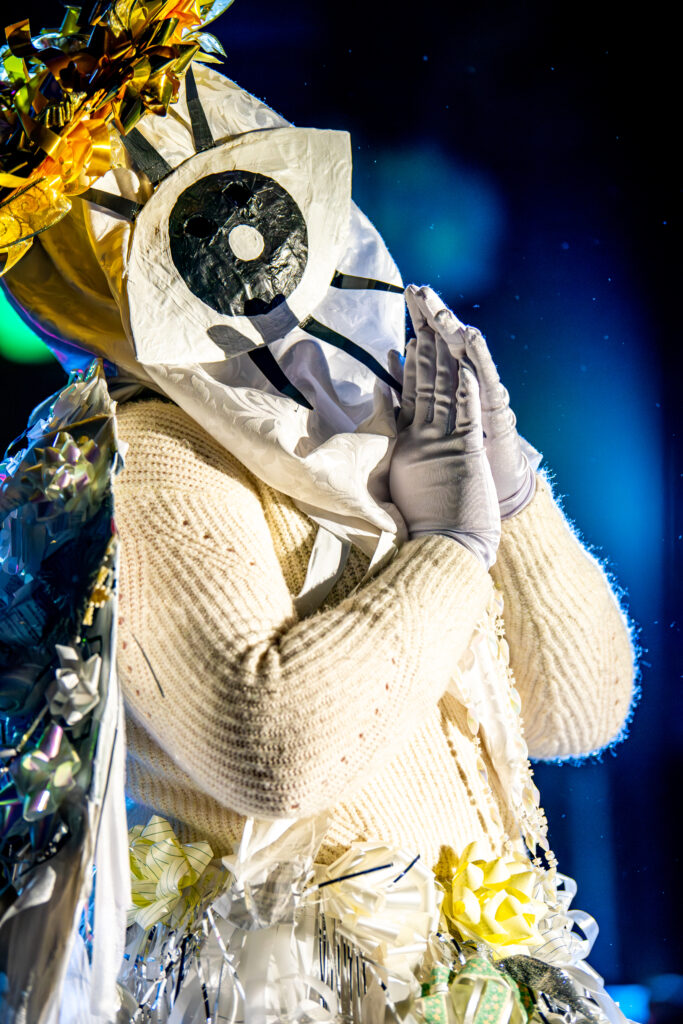
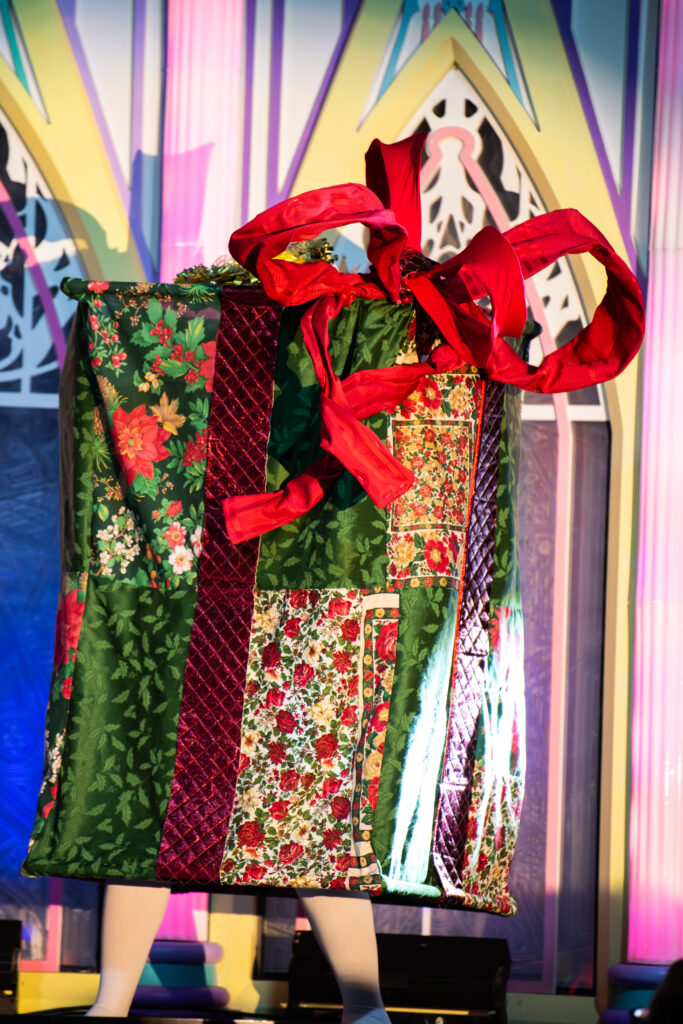
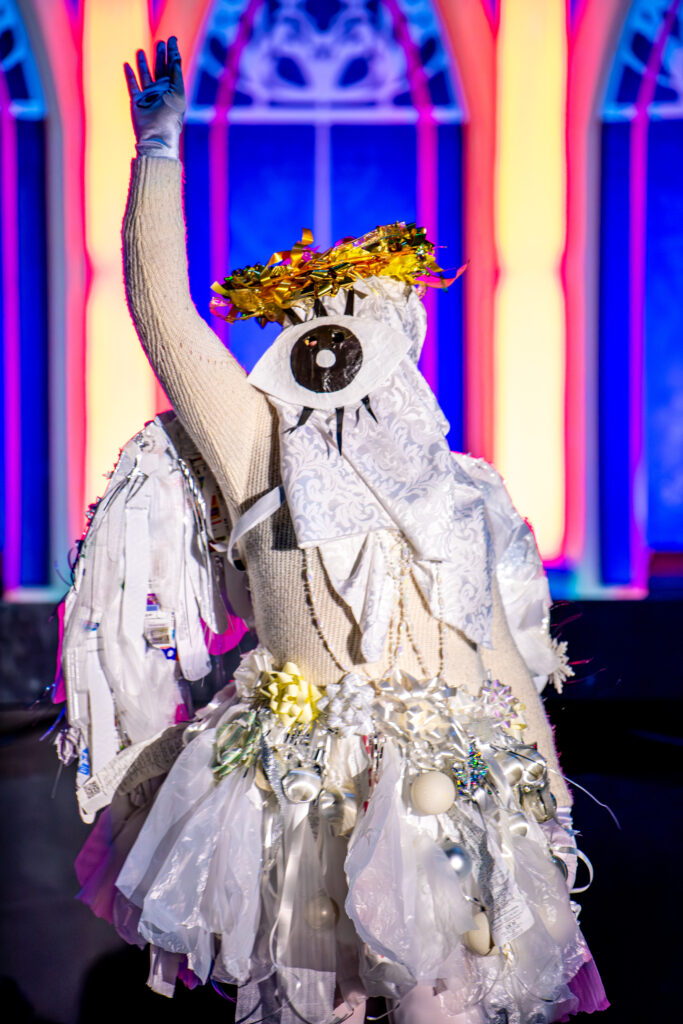
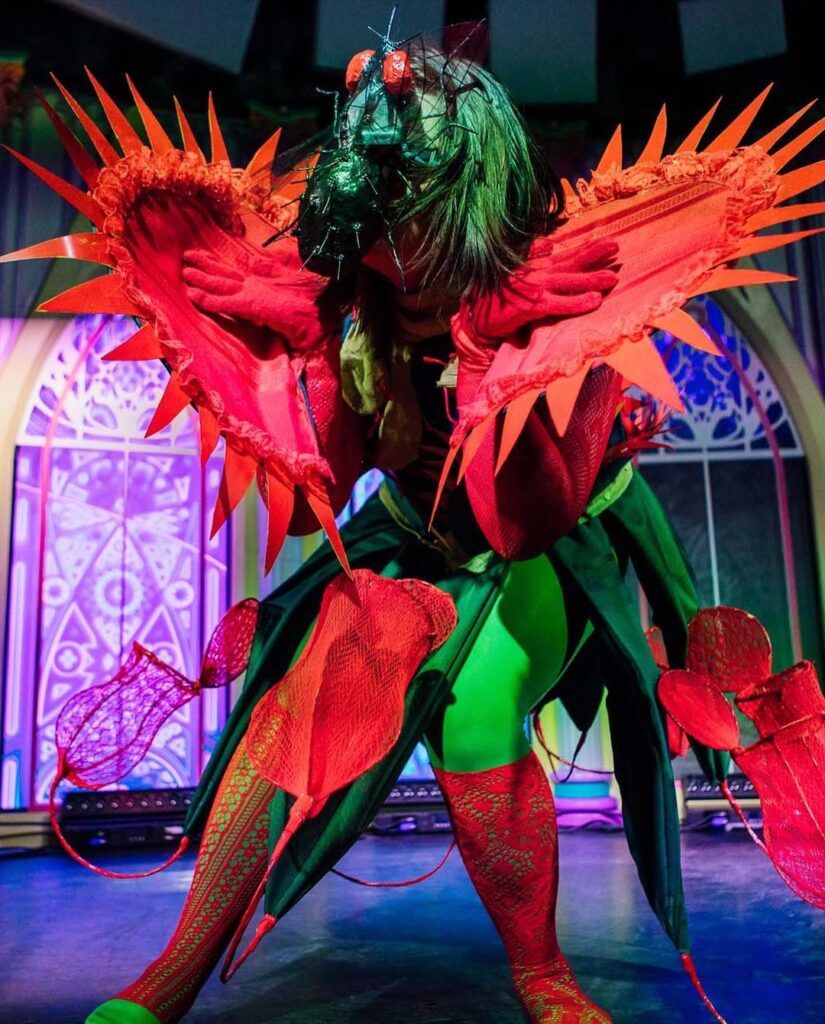
Carnivore
Using the bright colors of repurposed synthetic fabrics to attract and warn at once, Carnivore is a brightly-colored betrayal of plastic mimicking foliage mimicking safety. Luring in its victims with bright colors and sweet digestive enzymes, it poses a threat we rarely associate with anything that blooms. Inspired by carnivorous plants, it brings the separations between plant and animal, and synthetic and organic, into question.
Recycled fashion outfit designed for Meow Wolf Denver’s Ultimate Rubbish: Bloom (2024)
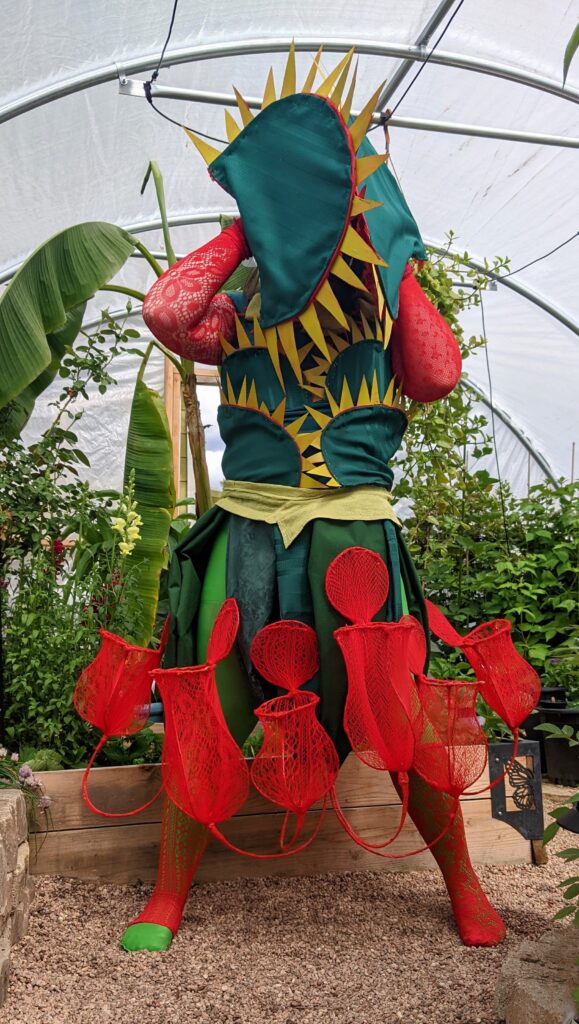
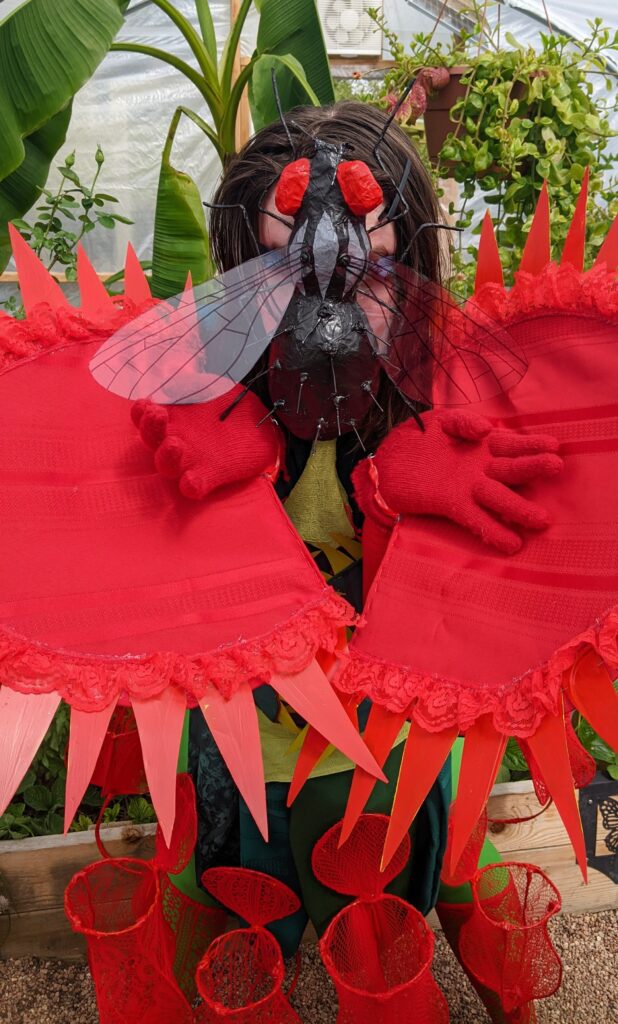
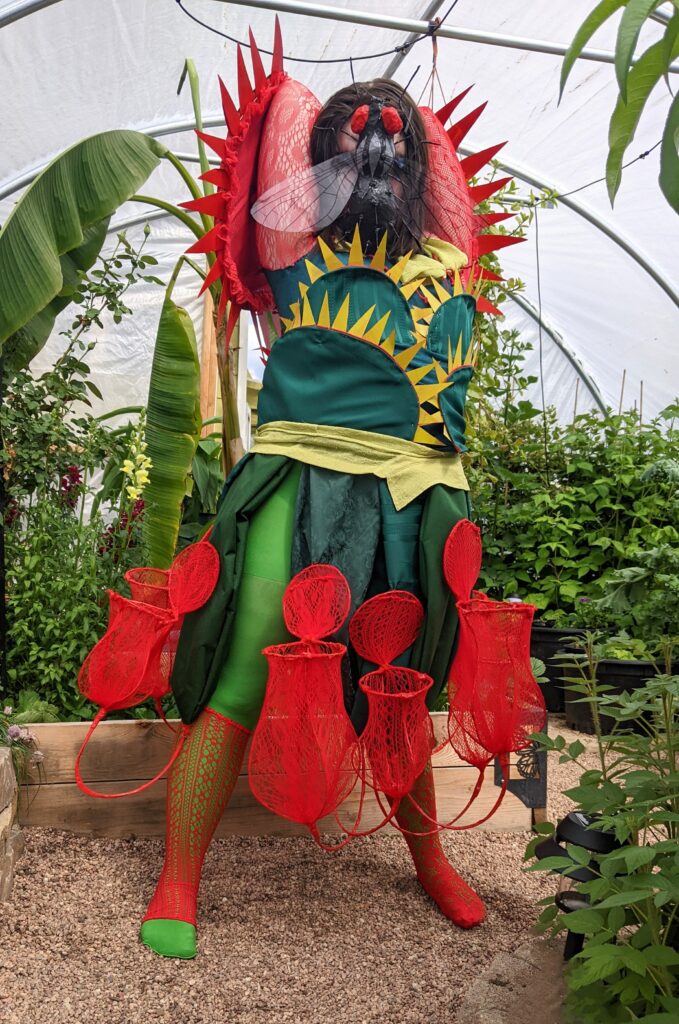
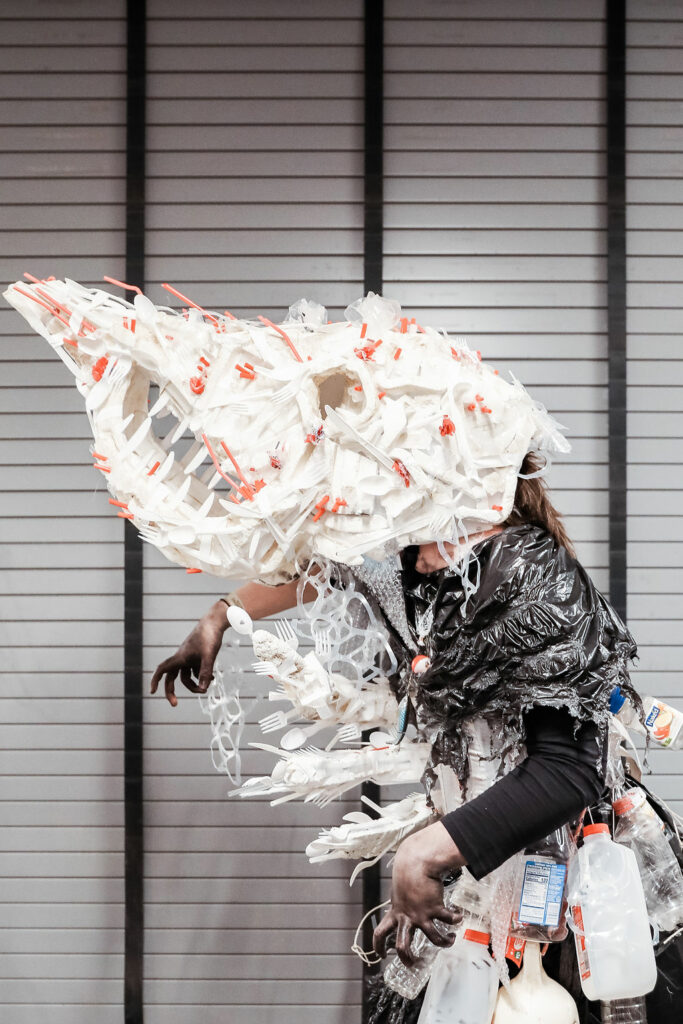
Whale Fall
A whale dies. Bacteria in her gut eat their way out, now unhindered by a still immune system. Gasses build up, and she floats – up to the surface of the sea. Gulls and fish frenzy around her – ripping and gulping and tearing and swallowing – until she pops, and sinks. Down into the twilight, then the midnight, then the abyss. Here, there is no light, little food, an endless darkness to fall asleep in. She attracts octopi, hagfish, and crabs like starving men drawn to a banquet. They wriggle and scuttle into her, eating her down to bone and blubber. The worms come in, red and thread-y, anchoring themselves in her ribs and vertebrae. Generations live and die on her, until every last crumb is gone.
On the surface, gyres of brightly-colored plastic swirl themselves into tangles. Plastic bags, bottles, take-out containers. A kaleidoscope of bone-white forks, silver-shiny wrappers, pink flip-flops and blue bottle caps. Abandoned fishing nets drift like huge, unfeeling jellyfish, catching unfortunates in their lines. Under the water, the sunlight is choked out by an ever-churning mass of garbage slowly grinding itself into microplastics. And yet, on this undecaying corpse of styrofoam and plastic, some creatures scavenge a life for themselves. Anemones, barnacles, crabs – beachside rock-climbers from far-away coasts – huddle like castaways on milk bottles and used toothbrushes. Like a whale fall, the garbage patch gathers life seeking a foothold. Unlike one, it is inedible, eternal, and ever-growing.
Recycled fashion outfit designed for Meow Wolf Denver’s Ultimate Rubbish: A Trashion Show (2023)
